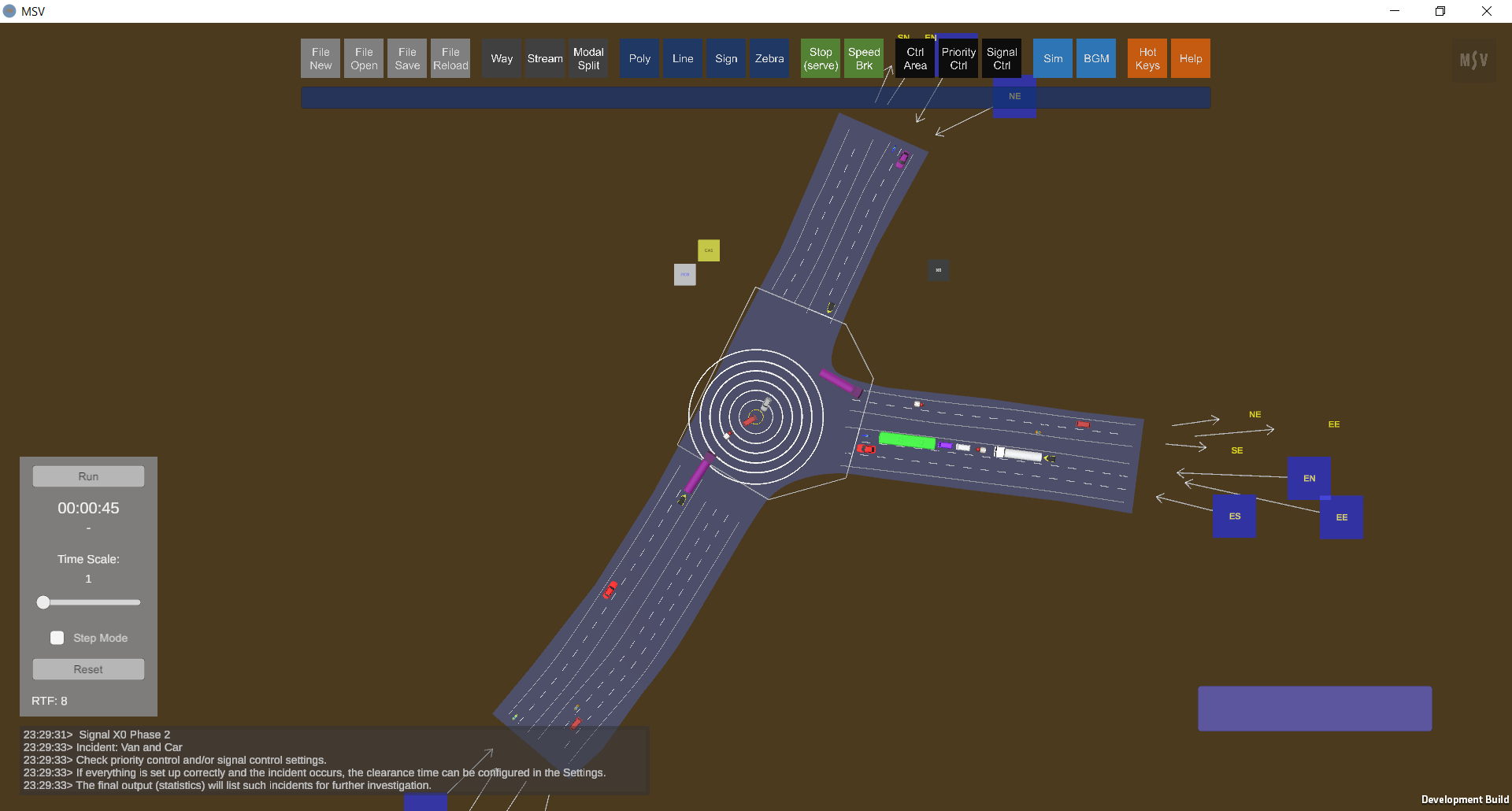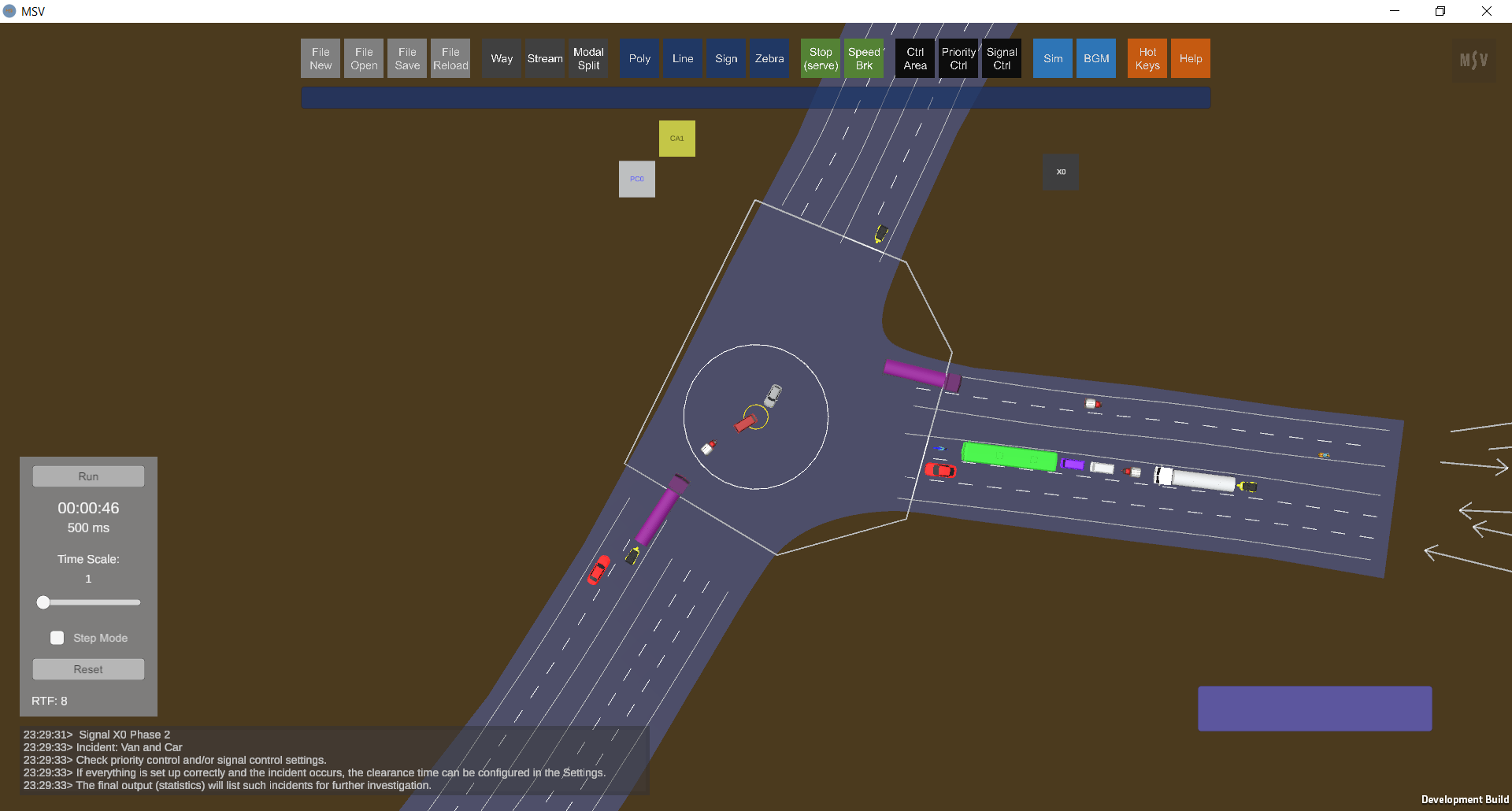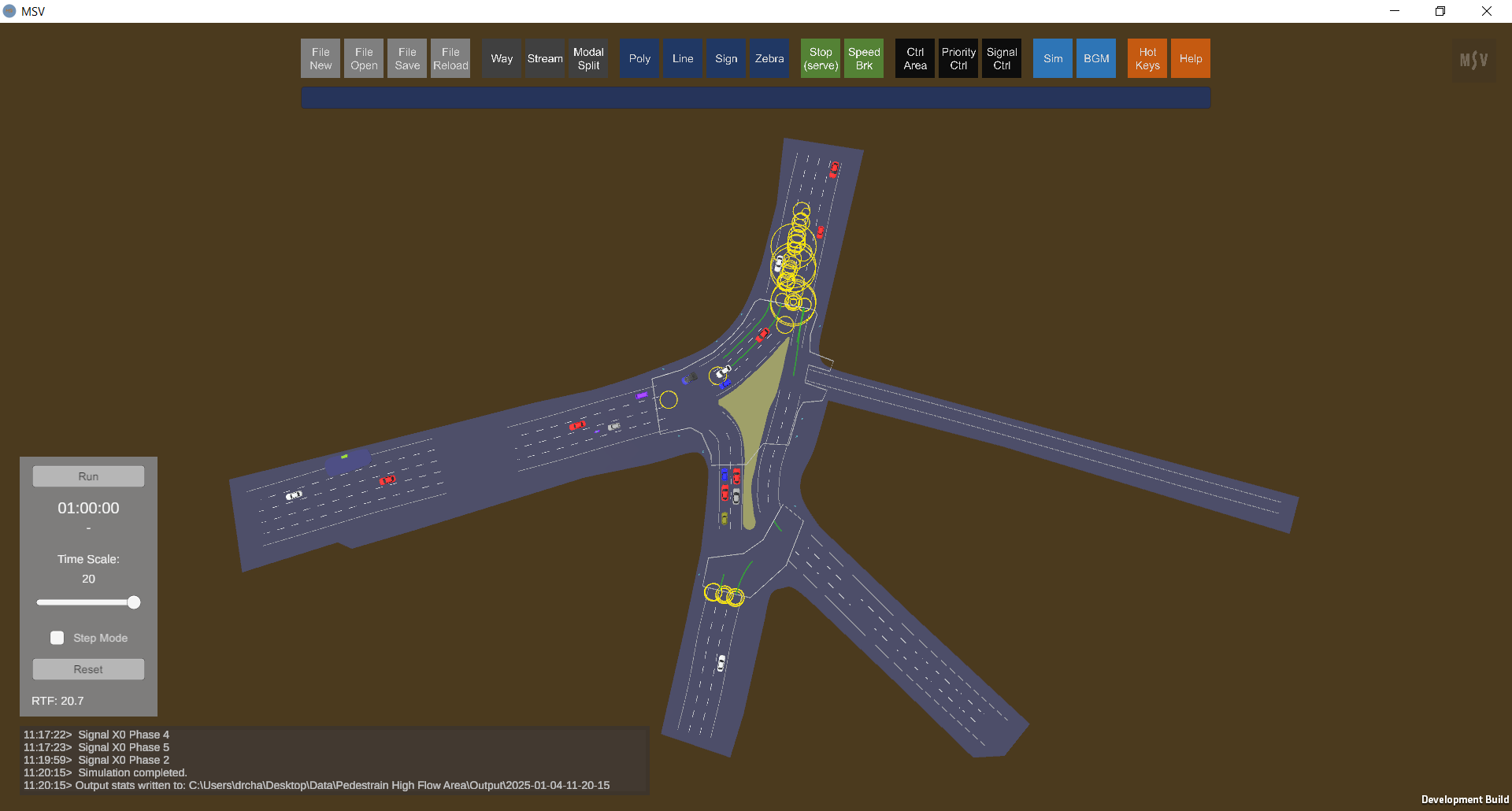There are two vital statistics provided to assess safety: incidents and near misses. A layout-flow-control strategies combination can be tested for its efficiency in these aspects, in addition to travel and stopped time measures of effectiveness. This section describes how MSV reports safety vulnerabilities in the modeled study area.
Users do not need to specify where and how an accident happens. Incidents occur if the layout, flow, and control strategies lead to such situations.
When two vehicles are involved in an accident, it is reported as an incident in MSV. A circular wave ripple effect is generated at the incident spot, as shown below. The vehicles involved will be displayed opposing each other, without showing a collision scene to avoid potentially disturbing visuals.

Wave ripple at the spot of an incident (accident).
When an incident occurs, the simulation pauses automatically, waiting for the user to respond. Users can take a snapshot if needed. Once the Run button is pressed, the simulation resumes. Vehicles involved in the incident remain at the spot for a duration called the incident management duration, which is configurable in the Sim Editor. During this time, a white circle is displayed at the incident location, as shown below:

Incident acknowledged by the user. A white circle remains until the clearance time elapses.
To configure the incident management duration, press the Sim button to open the Sim Editor. Enter the duration in minutes, representing the time required to clear the incident spot. For minor events, set a shorter duration, assuming the vehicles are promptly removed from obstructing traffic. For longer response scenarios, set a greater duration. Once this time elapses, the vehicles involved in the incident disappear from the scene, effectively clearing the spot. The incident information is stored in the program’s memory and written to a file upon simulation completion.
A near miss in traffic refers to situations where a potential collision is narrowly avoided, with no actual damage or injuries. These events often involve vehicles, pedestrians, or cyclists coming dangerously close to colliding, usually under high-risk conditions such as speeding or road design flaws.
Examples of near misses include:
Near misses highlight critical safety risks and serve as valuable indicators of potential accidents, making them essential for proactive traffic analysis and safety improvements.
At high traffic volumes, the number of near misses increases. When a near miss occurs, a yellow circle is drawn at the spot, with its radius determined by the vehicle length. For example, a bus escaping a near miss will have a larger circle than a motorbike. These circles remain visible briefly until the vehicles move away from the spot. At times, multiple near-miss circles can be observed, as shown below:

Circles indicating where near misses occurred. In this case, they often happen near the stop line (south side) and in the short queue space provided (north side).
Statistics on incidents and near misses are recorded in text files once a simulation run is complete. Refer to the manual section on Output Files for more details.